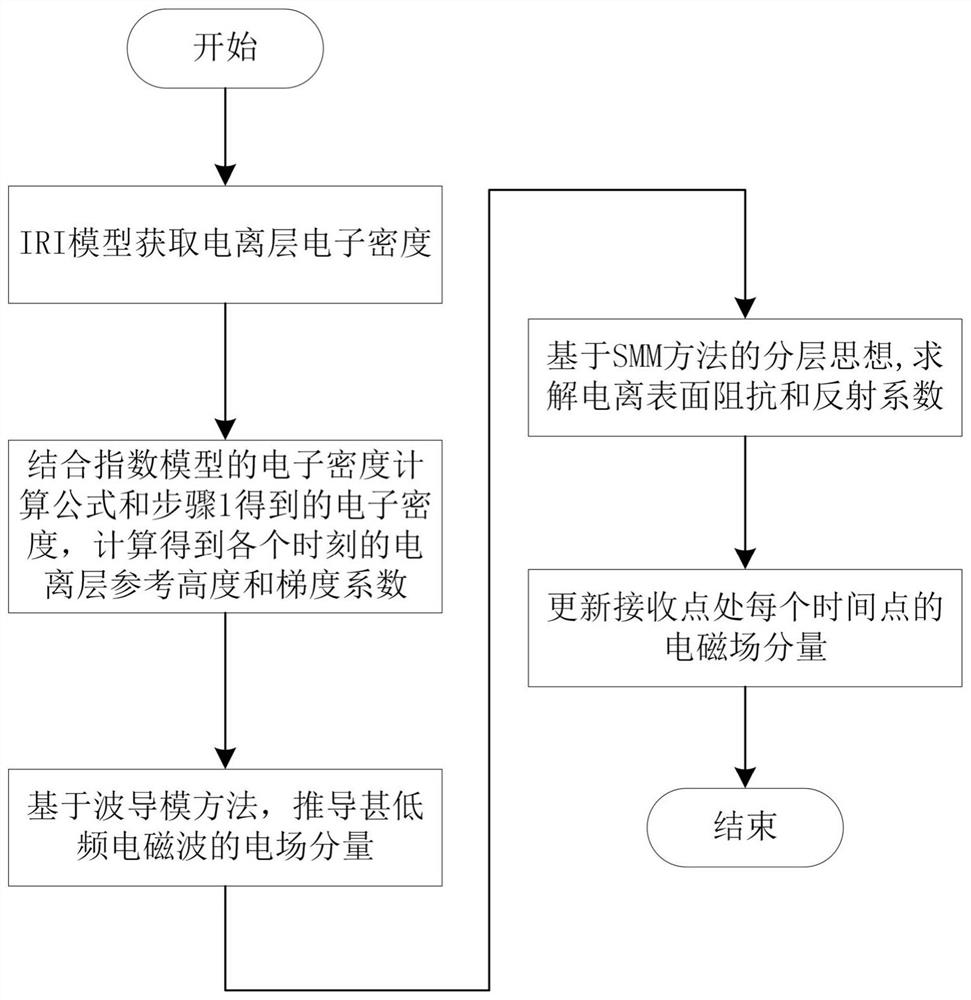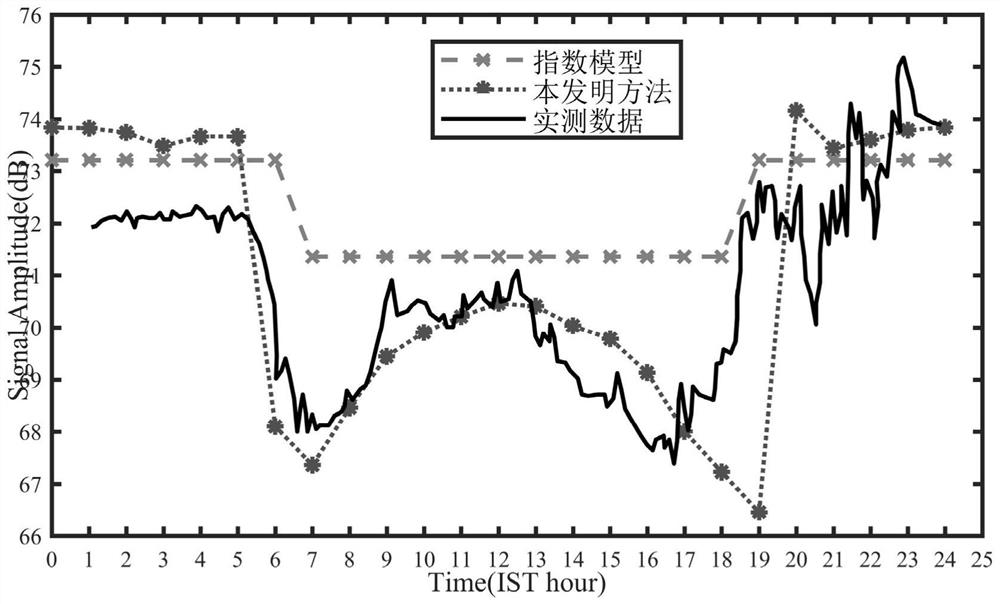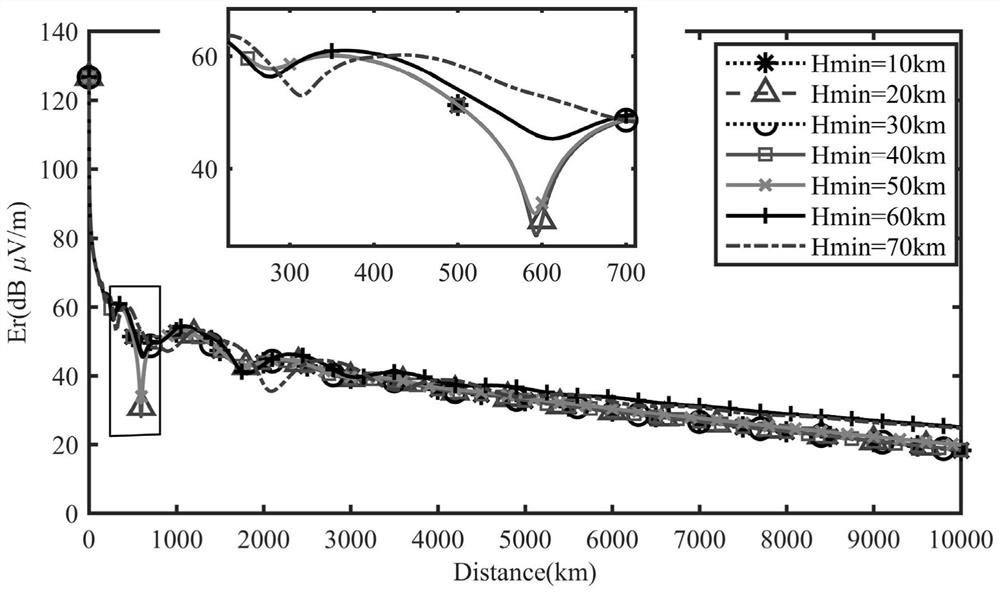Method for predicting change of very-low-frequency electric wave field intensity along with time at high precision
A time-varying, very low frequency technology, applied in the field of computational electromagnetism, which can solve the problem that the field strength of very low frequency radio waves cannot be accurately predicted with time.
- Summary
- Abstract
- Description
- Claims
- Application Information
AI Technical Summary
Problems solved by technology
Method used
Image
Examples
Embodiment
[0187] In order to check the correctness and high efficiency of the present invention, based on the waveguide mode theory, the IRI model is used to invert the index model parameters, and the daily variation law of the field strength at the receiving point on the VTX-Gwalior propagation path is calculated and compared with the measured data .
[0188] The calculation parameters are set as follows: the ionosphere uses a modified exponential model, the ionosphere is an isotropic ionosphere layered horizontally from 0 to 150 km, and the layer thickness of the ionosphere is 100 meters. The transmitting point is the very low frequency transmitting station VTX in India, whose geographical coordinates are 08°26' north latitude, 77°44' east longitude, and the receiver is located in Gwalior, India, whose geographical coordinates are 26°14' north latitude, 78°10' east longitude. The transmitting frequency is f=18.2kHz, and the great circle distance between the receiving point and the tra...
PUM
 Login to View More
Login to View More Abstract
Description
Claims
Application Information
 Login to View More
Login to View More - R&D
- Intellectual Property
- Life Sciences
- Materials
- Tech Scout
- Unparalleled Data Quality
- Higher Quality Content
- 60% Fewer Hallucinations
Browse by: Latest US Patents, China's latest patents, Technical Efficacy Thesaurus, Application Domain, Technology Topic, Popular Technical Reports.
© 2025 PatSnap. All rights reserved.Legal|Privacy policy|Modern Slavery Act Transparency Statement|Sitemap|About US| Contact US: help@patsnap.com



